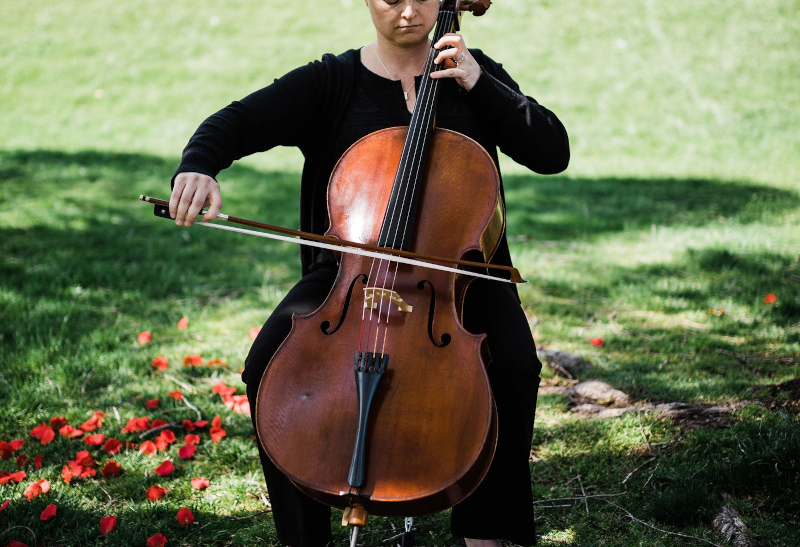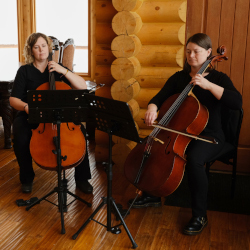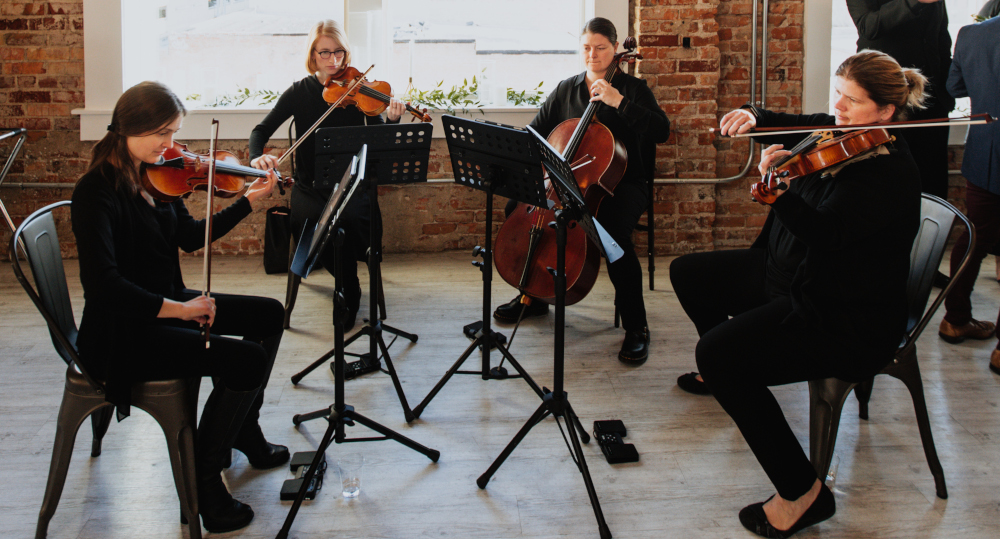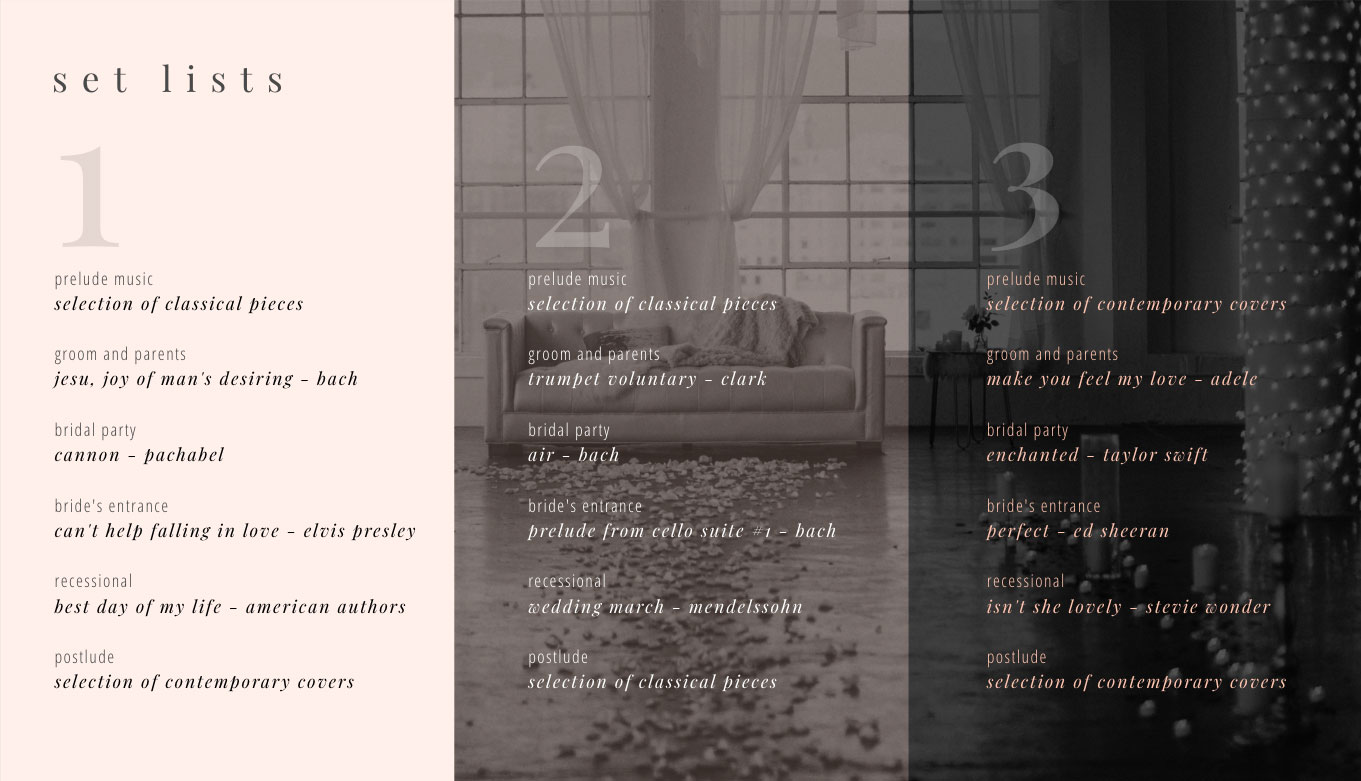Why should I even bother choosing songs?
Picking your songs or pieces really helps to give a custom feel to your event. Whether it’s a wedding, fundraiser, or a birthday party, chances are you may want to hear something specific played. Not all songs are created equal in the ears of listeners when they are being played by instrumentalists. Musicians are generally incredibly adaptable and can imitate the likeness of your favorite song within reason. However, some songs don’t provide the lyrical material to be a good candidate for that. Unless you have the imagination of a musician or are one yourself, it’s entirely possible you may not know how to pick one that is appropriate to be played by
a string quartet, trio, duet, or a soloist. Below are some tips on how to pick something that will delight your guests.
If you really don’t want to choose, the musicians are typically happy to pick for you with a little guidance on things like the mood you want to create, the activities that will be happening while they’re playing, and maybe a genre (classical, pop, showtunes, etc.).
Sometimes it helps get the creative juices flowing to see what our ensembles already have in the repertoire lists. Here are
our rep lists (each ensemble has a different set of available songs): Quartet, Trio, and Duet.
Pick a few songs you like to sing along with
First, this is YOUR event. In that light, you should make a list of songs or pieces you actually like (or if the list is shorter… don’t like). Pick songs from your Spotify favorites, or your Apple Music favorites, etc. Pick several songs for the activity. If you’re looking for a song for the keynote speaker at your fundraiser, for example, you should pick several songs that you like, they like, or would nicely tie into their speech or somehow define who they are or how you want them to be perceived.
The same goes for brides and grooms at a wedding. A bride or groom may have a piece that was playing when they had their first kiss, first date, or when someone unapologetically finished off the last of the ice cream for the first time in their relationship.
Sing it for your friends

Once you have your list of songs the test to help determine if this is a good fit for an instrumental ensemble or soloist is to sing it to a friend without the words. For example: hum it, sing “la, la, la”, or my personal favorite “meow, meow, meow”. If whoever is listening knows what it is, it’s a decent candidate.
Many times when we love a song, it may not necessarily be because we like the melody line. The underlying rhythms and harmony sometimes make our favorite song grab hold of our heart strings and make us feel things. That’s what music does and should do! However if it’s a bass line or a rhythm interacting with a series notes that are all the same that make up the lyrical line it will not come across well from a solo instrument and sometimes not even from an ensemble of multiple instruments.
The best song choices will have a memorable and recognizable melody line.
Picking songs for a quartet versus a soloist
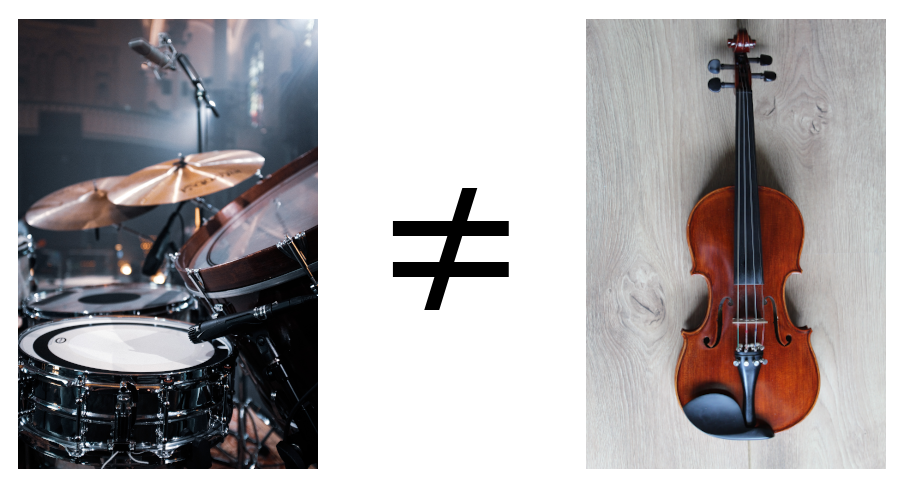
This leads us nicely into differences between songs chosen for ensembles (mutliple instrumentalists) versus a soloist. Generally speaking, a soloist will come with their instrument and nothing else that makes music. There are some soloists out there that do have looping pedals, speakers, etc. Everyone else will only have just their instrument and their body to make music. This is where the recognizable melody comes into play. That instrument may be able to play some harmony or rhythm along with the melody line but it is definitely going to be different than what you hear in the original version. The arrangement for a solo musician or other small ensemble can only do so much to imitate a drum kit rhythm, with some synthesized harmony, along with multiple person vocals, and multiple guitars (an entire band or pop/rock group).
String quartets have 4 instruments that can imitate that band or group more closely than a soloist. However, there are still limitations on how much a viola can sound like a drum kit and how much the violinist can imitate the guitarist with a whammy bar.
In conclusion
With all that being said, by choosing new and interesting music for a classical ensemble such a string quartet to play, you are helping us break out of our “classical” mold. Having arrangements made of more popular songs brings relevance to our way of life as classical musicians and helps us to entertain all future generations to come. Perhaps even encourage those younger generations to continue playing and writing music for our future.
… and we really do enjoy playing for people and events. So let’s keep it all going together and create beautiful and entertaining atmospheres.
Published March 14, 2023

